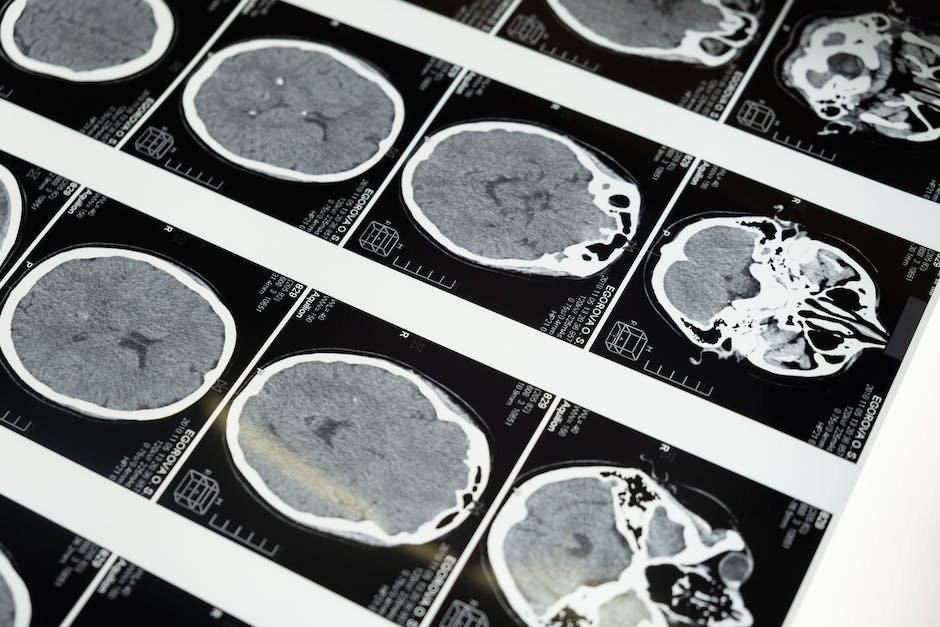
Autism, a complex and wide-ranging spectrum disorder, is a condition that significantly influences the natural development of the brain. The disorder manifests itself in a variety of ways, with diverse symptoms and levels of severity which can be witnessed from infancy. Evaluating the causes and understanding the impact of autism forms the crux of numerous scientific research studies. As these studies unravel, we comprehend the associated co-occurring disorders and genetic factors correlated with autism. In the journey towards unearthing more about autism, it is crucial to grasp the nuances of disruptions in infants’ developmental milestones, and the different social, speech, and behavioral features that can provide early signs of this condition.
Understanding Autism
Scientific Understanding and Interpretation of Autism
A journey into the scientific understanding of autism requires a voyage into the labyrinth of human neurodevelopment where intricate biological processes lay the foundation for social interaction, communication, thoughts, and behaviors – the spheres most affected by Autism spectrum disorder (ASD).
Autism, classified as a neurodevelopmental disorder, is primarily characterized by impairments in social interaction and communication, alongside the presence of restrictive, repetitive patterns of behavior or interests. It falls under ‘spectrum disorders’ because its manifestation varies across individuals, presenting a diverse array of symptoms of different severity. The scientific community perceives autism not as a static condition but, a developmental trajectory that unfolds over time.
One of the pivotal underpinnings of autism research is the pervasive role of genetics. Studies have concluded that the likelihood of developing autism is predominantly inherited. Intriguingly, no exact ‘autism gene’ has been pinpointed; rather, an interplay of multiple genes, perhaps hundreds, seems to coalesce, significantly increasing the autism risk.
Yet, a purely genetic interpretation could leave large portions of the autism puzzle unresolved. Enter the realm of epigenetics: researches have indicated that environmental influences may interact with the genome, causing changes in gene expression but not in the genetic code itself. Such epigenetic modifications can also play a role in the occurrence of autism spectrum disorders.
Further scientific discernment highlights structural and functional differences in the brain. Some evidence points at an excessive growth of the brain in early childhood years in those with ASD, while other researches draw attention to connectivity issues between various parts of the brain.
Notably, one should not overlook the influential role of the evolutionary perspective. Proponents argue that some genes associated with autism could confer certain advantages, such as superior memory or intelligence—an example of the ‘balanced polymorphism’ theory, suggesting a potential rationale behind the preservation of ‘autism genes’ in human genetic evolution.
It is important to underscore the interdisciplinary nature of autism research, with cognitive science, neuroscience, genetics, and psychology contributing pieces to the complex autism puzzle. At the crux lies the recognition that person-centred approaches are indispensable in autism diagnosis and intervention, given its varied manifestations and developmental trajectory.
Finally, it is crucial to consider neurodiversity, a view that brain differences are just that – differences, not deficits. The neurodiversity perspective invites reassessment of autism, from a pathological standpoint to a variation within the human species, thus fostering acceptance and inclusion.
In essence, the scientific understanding of autism is a multifaceted, ongoing discovery, an exploration that continues to deepen providing more inclusive perspectives, challenging stereotypes, and facilitating the evolution of more nuanced and effective interventions.

Autism in Infants
Critical Developmental Milestones Impacted by Autism Spectrum Disorder in Infants
The experience of infants with autism spectrum disorder (ASD) often diverges from typical developmental trajectories from a young age. While ASD’s clinical manifestations may vary, accelerating diagnostic procedures and initiating interventions as early as possible are unequivocally beneficial. This pursuit necessitates a comprehensive understanding of significant developmental milestones that may be influenced by ASD.
Around six months, the first fundamental milestone is the establishment of joint attention, where the infant can follow the direction of another person’s gaze or point. Generally, infants with ASD may not reciprocate such actions, which can undermine their ability to engage in social exchanges.
Moreover, ASD may also affect nonverbal communication. Infants without ASD typically begin to babble by six months and utter single words by the first birthday. In contrast, those with ASD may exhibit noticeable speech delays, surprisingly, some may remain nonverbal beyond these milestones.
Next, consider the development of fine and gross motor skills. Infants with ASD might display delays in maturation, such as crawling, throwing and catching a ball, or developing a pincer grip. These variations may be early markers of motor coordination challenges, frequently observed in older children with ASD.
Consideration must also be given to sensory processing. Infants with ASD may react differently to sensory stimuli, either showing hypersensitivity or hyposensitivity. They may strongly avoid specific textures, sounds, or lights, or seek these very stimuli. This atypical sensory processing often leads to feeding difficulties in this group, as they may be picky eaters, refusing certain textures or tastes.
Finally, the development of social responsiveness is paramount. Infants begin to recognize familiar faces around three months, but those with ASD often struggle with this. They tend to avoid eye contact and may not respond to their names being called, reflecting difficulties in understanding social cues.
Identifying these substantial developmental milestones can lead to the earlier diagnosis of ASD, equipping physicians, educators, and parents with the knowledge necessary to plan and implement early, effective interventions. The challenges these infants face necessitate continued robust research, from neuroscience to psychology, to create successful symptom management strategies and enhance their quality of life. The intense exploration and interest in this field are driven by the conviction that every person’s potential and contributions are intrinsically valuable, irrespective of their neurological individuality. Undoubtedly, the road to a more inclusive, understanding society is carved by academic exploration and scientific innovation.
Signs of Autism in Infants
Autism, a complex and multifaceted condition, often manifests in its earliest form within the first years of an infant’s life. Consequently, recognizing early signs is a crucial pursuit of both researchers and practitioners, enhancing possibilities for earlier intervention and improved outcomes.
One of the initial signs is notably a lack or delay in joint attention—the capacity to share focus with another person on an object, sound, or event. An infant without this early social communication might not respond to their name, follow a pointing finger, or gaze in the direction of a parent’s focal point.
The absence or delay of nonverbal communication is another significant early sign of Autism Spectrum Disorder (ASD). Before the attainment of language, infants heavily rely on nonverbal means of communication such as eye contact, facial expressions, and gestures. Infants showing signs of ASD may exhibit less frequent or absent nonverbal communication and may even seem indifferent or oblivious to the social cues of others.
Speech delays signify another potential early indicator of ASD. By the age of one, a typically developing child can say a word or two, whereas many children with autism may stay nonverbal or have significantly delayed speech.
Autism can also delay motor skill development in infants. These delays may encompass both gross and fine motor skills, such as rolling over, sitting without support, crawling, or manipulating small objects.
Sensory processing anomalies, another key feature of ASD, may emerge during infancy. Infants may seem unusually sensitive to light, sound, touch, or may demonstrate a lack of response to sensory stimuli. They might reject certain textures of food or clothing materials and may react excessively or inadequately to sensations that seem ordinary to others.
The level of social responsiveness is another area to observe. Infants displaying autistic signs might not exhibit typical anticipatory postures or express joy when lifted by an adult. Their engagement with social games like peek-a-boo might be less than enthusiastic or entirely absent.
Early diagnosis, powered by vigilant observation of the aforementioned signs, can profoundly influence the progression of ASD. It facilitates early intervention, enhancing the prospects for significant improvements in language acquisition, cognitive function, and social interaction skills.
Appropriate interventions for ASD are customized to the individual’s unique needs and often incorporate a multi-domain approach. Strategies may include targeted speech therapy, occupational therapy, applied behavior analysis, and social skills training, to mention a few.
Life for infants with ASD can present uncommon challenges. Rigidity in routines, hyper-reactivity to sensory stimuli, and impaired social interaction can make the world an overwhelming place for these infants. Nonetheless, with every challenge comes an opportunity. The opportunity here is to extend our understanding and acceptance of neurodiverse individuals.
Research in the field of ASD is continually burgeoning, uncovering new insights and pushing the boundaries of our understanding. The focus is increasingly shifting towards early detection, intervention models, and the construction of inclusive and accepting social environments.
In conclusion, the navigation of the ever-deepening waters of autism research necessitates a concerted effort. As scientists, professionals, family members, and advocates collectively work towards understanding and fostering the neurodiverse, our society increasingly learns to champion the cause.

Screening and Diagnosis
Screening and diagnosing autism spectrum disorder (ASD) in infants necessitates a meticulous and comprehensive approach to detect potential indications of this neurodevelopmental condition. Paramount among these signs are joint attention, nonverbal communication, possible speech delays, distinct variations in motor skill development, and alterations in sensory processing.
The developmental milestone of joint attention, involving the shared focus of two individuals on an object or event, typically emerges around 9 months of age. An absence or marked delay in infants’ ability to initiate or respond to joint attention scenarios can serve as one of the earliest indications of potential ASD.
Further, expecting nonverbal communicative behaviors, such as joint attention, gaze following, and social referencing, are integral aspects of infants’ socio-cognitive development. An observable deviation or absence in these behaviors can hint towards potential ASD. Additionally, speech delays, beyond that of a typical trajectory of speech-language development, warrant a diagnostic assessment for ASD.
Examination of motor skill development in infants with potential ASD reveals crucial insights. Considerable research indicates distinct variations in the motor development patterns, such as disrupted milestones in gross and fine motor skills, suggestive of the possibility of ASD.
Alongside these indicators, infants with ASD often manifest atypical sensory processing. They may show heightened or diminished response to sensory stimuli, including tactile, auditory, visual, and gustatory domains. Characterizing these sensory profiles in infants can play a pivotal role in instigating an early diagnosis, underscoring the gravity of this facet of early development.
Social responsiveness, a vital facet of early socio-emotional development, often differs in infants with ASD. These crucial signs, namely a dearth of social smiling, lack of reciprocal communication, or rare instances of eye contact, may manifest as early as 6-12 months of age.
Early diagnosis of ASD, undoubtedly, is of prime importance. Diagnosing autism in its earliest stages allows for the implementation of specialized interventions that may change the course of development and significantly improve outcomes for individuals with ASD.
In response to learning of potential ASD in an infant, a plethora of interventions may be considered. These encompass a diverse range of therapies, all aimed at promoting functional and adaptive skills. Examples include behavioral interventions, speech-language therapy, occupational therapy, and more.
Overarching these specialized direcions of interest is the recognition of the day-to-day challenges faced by infants with ASD. The struggle with multi-contextual transitions, sensory processing, and social communication often compounds an infant’s ability to navigate their environment.
Exploration of the rich tapestry of research in the field of autism spectrum disorder expounds upon the collective understanding of this complex condition. Of particular interest to researchers is the quest for novel biomarkers and genetic indicators of ASD, aiding in early detection and intervention modalities.
The evolution towards embracing neurodiversity heralds a pivotal shift in societal attitudes towards autism. It encourages not only understanding and accepting individuals on the autism spectrum but actively endeavors to create inclusive social environments that celebrate cognitive differences.
In synopsis, ASD screening and diagnosis is a nuanced and multi-tiered process that requires convergence of multidisciplinary knowledge. It is by enhancing our understanding of these early signs and developing sensitive and reliable screening tools that we can promise a future filled with more inclusive, accepting, and understanding environments for individuals with ASD.

The Role of Caregivers and Professionals
The intricacies of autism spectrum disorder (ASD) manifest exceptionally early, offering windows into the human mind’s pervasive connectivity and developmental trajectories. Intervention and support for infants showing signs of ASD require a deep understanding of the subtleties in their developmental markers, such as joint attention, nonverbal communication, and motor skill development.
Joint attention is an essential milestone in early socio-cognitive development, often observed as early as nine months, where the child shares an interest in an object or event with another person. This shared attention is critical for social, language, and cognitive development. Infants potentially presenting ASD may exhibit delays or absent pass in developing this mighty skill, necessitating careful observation and early intervention for enhanced social skill development.
Nonverbal communication avenues, such as gaze, facial expressions, or gestural communication, are pivotal to human social referencing. As ASD can significantly impair social referencing, an absence or delay of such nonverbal communication cues in infants thus necessitates immediate attention. Early supportive strategies here may revolve around enhancing emotion sharing, empathetic behavior, and social engagement.
Infants exhibiting ASD may also experience speech delays. While speech development varies among infants, significant deviations from cognitive-equivalent peers suggest a need for early intervention. Strategies such as facilitated play or specific language therapy can significantly boost speech development and cognitive function.
Motor skills development is another area offering insightful ASD indications. Atypical motor development, such as delayed motor milestones, asymmetrical motor movements, or poor motor coordination, may suggest potential ASD. Early and regular developmental surveillance is thus crucial to provide physical therapy support, ensuring smooth motor developmental trajectories.
ASD can also manifest through sensory processing anomalies. These infants may exhibit either hyper or hypo reactivity to sensory input, leading to atypical responses to touch, sound, or light. This demands a sensory integration approach, encompassing systematic, and planned activities that explore various sensory stimuli.
Social responsiveness, an infant’s ability to interact socially, tends to be variable in infants with ASD. A lower level of social responsiveness in such infants necessitates early interventions, possibly tailored towards promoting socially engaging behaviors.
The indispensable aspect of tackling ASD is early diagnosis. Early detection of signs enables swift intervention, considerably affecting the progression of ASD. Accordingly, regular developmental surveillance stands to significantly boost early diagnosis rates and enable beneficial early intervention efforts.
Various interventions can support infants with ASD, depending on the severity and specific manifestations of the disorder. These may include behavioral therapy, speech-language therapy, occupational and physical therapy, or social skills training. Interdisciplinary care involving caregivers and professionals is therefore utmost, targeting holistic development and growth.
Infants with ASD can face daily challenges, including inefficiencies in communication comprehension, unpredictable surroundings, or sensory overstimulation. Pare these with the struggles of navigating an oftentimes unaccommodating world, and the need for research to address these hurdles becomes glaringly evident.
Currently, the research and scientific community’s intense focus lies in unraveling ASD complexity, specifically the identification of biomarkers and potential genetic indicators. Such breakthroughs would significantly impact early detection of ASD, ushering a new era of preemptive therapy intervention models.
Overarching justice for individuals with ASD lies not just in scientific endeavors but extends much beyond – embracing neurodiversity, fostering understanding, and innovating for an inclusive society. Leveraging collective wisdom and effort would indeed play a vital role in achieving the envisioned assimilation. Undoubtedly, these pursuits champion an intricate tapestry interwoven with ideas, discoveries, humanity, and hope. The spirit entails perceiving ASD not merely as a disorder but rather as an alternate shade of human existence.

Destigmatizing autism involves a holistic approach wherein caregivers, educators, and health care professionals play a vital role. The key to managing the life-long implications of autism lies in the timely detection of signs, early interventions, and the initiation of suitable treatment protocols. As we incorporate strategies such as the Early Start Denver Model, the collective goal should be to render comprehensive support to an infant showing potential signs of autism. Through persistent efforts in research and continuous learning, we can foster a more accepting environment for children with autism that nurtures their individual capabilities and harnesses their potential.




